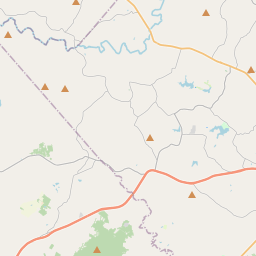The Civil War in Stevensburg
Historical marker location:






Hansbrough's Ridge. Winter Encampment
April 12, 1861: The Civil War begins with the Confederate attack on Fort Sumter, located in South Carolina's Charleston Harbor.
April 15, 1861: President Abraham Lincoln issues a call for 75,000 volunteers to serve in the Union Army to suppress the rebellion.
May 24, 1861: The first major land battle, known as the First Battle of Bull Run (or First Battle of Manassas), takes place in Virginia. It ends in Confederate victory.
September 17, 1862: The Battle of Antietam in Maryland becomes the bloodiest single-day battle in American history, with heavy casualties on both sides. The Union forces, commanded by General George McClellan, manage to halt Confederate General Robert E. Lee's advance into Union territory.
January 1, 1863: President Lincoln issues the Emancipation Proclamation, declaring that all slaves in Confederate-held territories are to be set free. However, the proclamation does not immediately free all slaves in the United States.
July 1-3, 1863: The Battle of Gettysburg in Pennsylvania takes place, resulting in a significant Union victory and inflicting heavy casualties on Confederate forces. It marks a turning point in the war.
November 19, 1863: President Lincoln delivers the Gettysburg Address, emphasizing the principles of liberty, equality, and the preservation of the Union.
April 9, 1865: General Robert E. Lee surrenders to Union General Ulysses S. Grant at Appomattox Court House in Virginia, effectively ending the Civil War.
April 14, 1865: President Lincoln is assassinated by John Wilkes Booth while attending a play at Ford's Theatre in Washington, D.C.
May 10, 1865: Confederate President Jefferson Davis is captured, signaling the collapse of the Confederate government.
December 6, 1865: The Thirteenth Amendment to the United States Constitution is ratified, officially abolishing slavery throughout the country.
While this timeline provides an overview of key events, it is important to note that the Civil War spanned over four years, from 1861 to 1865, and encompassed numerous battles, campaigns, and political developments that shaped the course of American history.
Virginia was home to some of the earliest organized resistance to British rule, with the formation of the Sons of Liberty in the mid-1760s.
During the American Revolutionary War, Culpeper County played a significant role as a hotbed for revolutionary activity. Many residents joined the fight against British rule, with Culpeper Minute Men forming one of the first independent militias in the colonies. The county was also witness to important events such as the Culpeper Court House Raid, where local Patriots disrupted the British supply chain.
In the mid-19th century, Culpeper County experienced a transition with the growth of agriculture and the railroad industry. The county became renowned for its production of wheat, corn, and tobacco, and the arrival of the railroad in the 1850s facilitated economic growth and transportation of goods. The Civil War had a significant impact on the county, as it was a strategic location for both the Union and Confederate forces, leading to several battles and skirmishes.
In the 20th century, Culpeper County saw the rise of modern infrastructure and economic diversification. The construction of highways and the expansion of the railway network further connected the county with neighboring cities and facilitated the transportation of goods and people. Today, Culpeper County has embraced its historical heritage with preservation efforts and the establishment of a vibrant community. The county is known for its scenic landscapes, historic sites, and a bustling downtown area that showcases its unique blend of history and modern amenities.
Culpeper County Timeline
This timeline provides a glimpse into the major events and milestones that have shaped the history of Culpeper County, Virginia.
- 1749 - Culpeper County was established as part of Virginia's Northern Neck.
- 1775-1783 - Culpeper County played a significant role in the American Revolutionary War, with numerous battles and skirmishes taking place within its borders.
- 1800 - Culpeper County's population reached its peak with over 15,000 residents.
- 1861-1865 - Culpeper County was heavily impacted by the Civil War, serving as a major supply and transportation center for the Confederate Army.
- 1870s - Reconstruction brought significant changes to Culpeper County, including the construction of the Orange and Alexandria Railroad.
- 20th century - Culpeper County witnessed economic growth and development, with the establishment of industries such as lumber mills and manufacturing plants.
- 1959 - The first traffic light was installed in the town of Culpeper.
- 1977 - Culpeper County was designated a National Historic District by the Virginia Historic Landmarks Commission.
- 1990 - The town of Culpeper became an independent city, separate from Culpeper County.
- Present - Culpeper County continues to thrive as a vibrant community with a rich history and diverse economy.